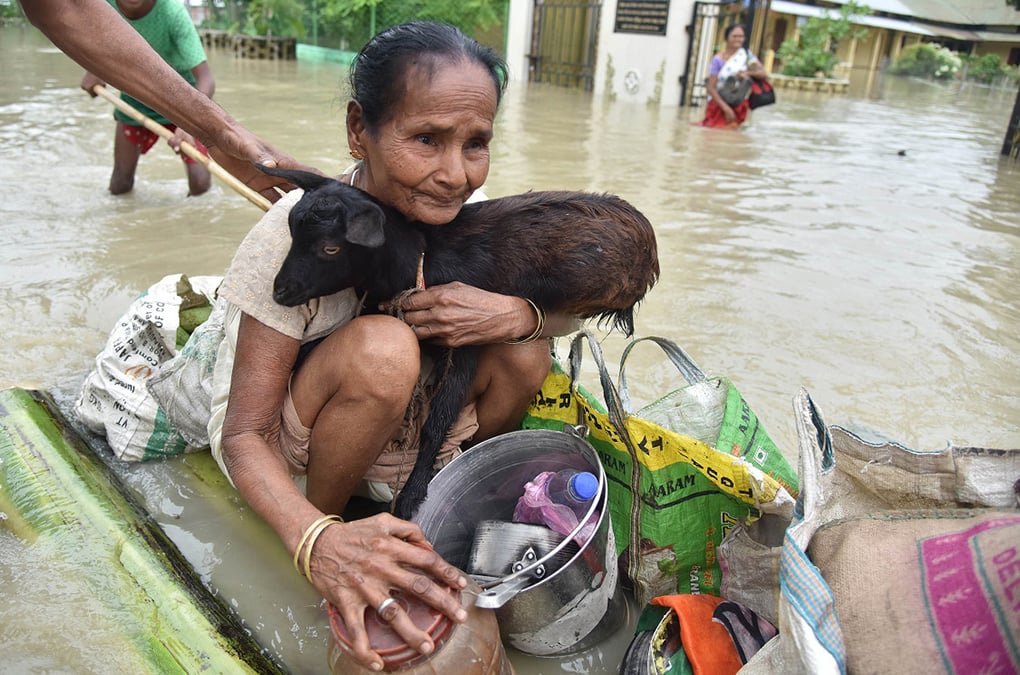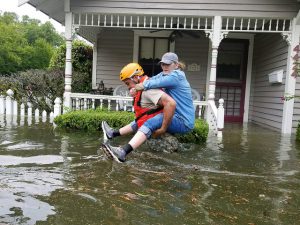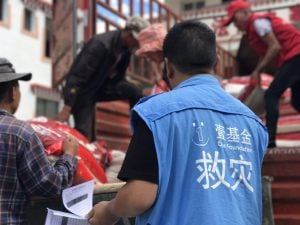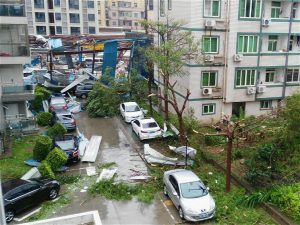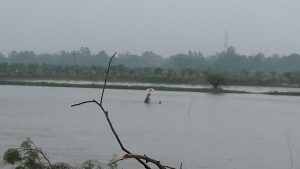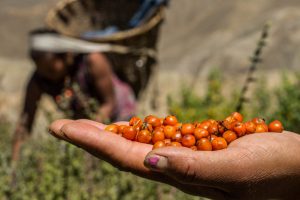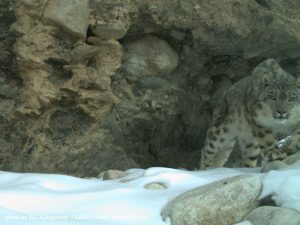For the third year in a row, India’s monsoon season has produced floods in the north-west and the north-east, while southern parts of the country have suffered from a rainfall deficit. Rainfall extremes have increased threefold over the last few years and now extend over all of central India – from Gujarat to Odisha. The floods of 2017 are quite consistent with this pattern; the moisture derives from the northern Arabian Sea and not from depressions in the Bay of Bengal as one would usually expect.
Considering the total rainfall over the entire monsoon season from June to September, an early monsoon tends to bring bountiful rainfall whereas better-than-average rainfall is rarely seen when they are delayed.
The onset of the monsoon has been delayed almost every year since 1976, when there was a regime shift in climate around the world – from a weak to a strong El Niño period. Since this time, monsoons have also been ending sooner – almost a week from the end of September – so the length of the rainy season has been compressed. This is in addition to the approximately 10% decrease in all-India monsoon rainfall, and an increase in the spatial variability of monsoon rainfall, since the 1950s.
The climate change effect
During the monsoon season, there are usually random “break periods” when there is hardly any rainfall. These periods are associated with systems moving northwards from the equatorial region. All available data and models blended with data (known as reanalysis) indicate that global warming is shortening the length of the “active periods” when it does rain, while lengthening the break periods. They also indicate that climate change is decreasing the extremes in the active periods while increasing them in the break periods.
So, just about everything about the monsoon is changing – rainfall intensity, duration, frequency and spatial distribution.
We cannot be entirely sure if all this is in response to global warming – in which case it could be permanent and accelerate – or if the monsoon system will revert to a more “normal” state. Until we have many more years of data and reanalysis, a complete separation of the global warming impact from natural climate variability such as due to El Niño may not be possible.
The key question right now is whether the shortened length of the rainy season could lead to increased monsoon extremes by trying to squeeze similar amounts of rainfall into a shorter period, or whether global warming is causing shifts in the duration, intensity and frequency of rainfall.
Analysing the monsoon
Analysing the South Asian monsoon has been difficult. A rich vein of long term data yields great insights but also raises new questions and poses serious challenges to climate models old and new. However, now we do know that rainfall extremes during the monsoon are unrelated to local warming.
We also know that the long term trends we are witnessing: decreasing mean rainfall, increasing spatial variability of rainfall, and a threefold rise in rainfall extremes, are associated with a weakening monsoon wind circulation and a decrease in the number of monsoon depressions from the Bay of Bengal. Historically, these depressions used to be responsible for about half the rainfall during the entire monsoon.
So, if there are fewer monsoon depressions in the Bay of Bengal, what is driving these rainfall extremes? A new paper I co-authored with Roxy Mathew Koll of the Indian Institute of Tropical Meteorology finds that warming of the land in north-west India and Pakistan creates a pressure force that drives strong near-surface winds from the northern Arabian Sea to central India and brings enough moisture to more than compensate for the weakening monsoon circulation and the decreasing monsoon depressions from the Bay of Bengal. This also explains the threefold increase in rainfall extremes despite the decreasing trend in overall monsoon rainfall.
Other factors at play
Other factors influencing the monsoon, which brings more than 80% of the annual rainfall to South Asia, include the impact of El Niño and its counterpart La Niña. Then there’s the warming and cooling of the Indian and Atlantic oceans – the Indian Ocean Dipole and the Atlantic Niño. All these play a role in the monsoon, but it is not always clear which affects what, and how.
Despite these changes and the decreasing trend, rainfall at the end of most seasons remains within 10% of the long period average. But with the variations across space increasing, that means little to farmers dependent on rain-fed agriculture. Some regions such as northern Karnataka and central Maharashtra have recently had rainfall deficits close to 50%.
Long term rainfall decline is worrying, especially if it is caused by oceans warming up as a result of climate change. This can alter the land-ocean temperature contrast and reduce the moisture demand over land during the monsoon.
Henry Blanford, director of the India Meteorological Department in the late 19th century, referred to the ephemeral behaviour of the monsoon as its vicissitudes. These have clearly increased now, and made the work of scientists more difficult. But there is a silver lining. We now know that non-local influences are more important; it is easier to track them and improve our forecasting to the point where authorities have sufficient time to act before a flood or a storm.
And since total rainfall has remained within 10% of the long period average, large water reservoirs are unnecessary. The real large scale plan should be about capturing the rains, either by rainwater harvesting or agroforestry.
This article was first published on The Third Pole. It’s republished here with permission.
